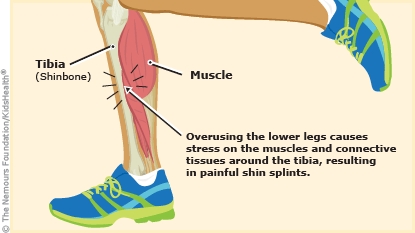Find a Provider
From well-child visits to specialized treatment of complex illnesses and injuries, we offer comprehensive care from an exceptional team of doctors, nurses and allied professionals.
- Parents Home
- Para Padres
- A to Z Dictionary
- Allergy Center
- Asthma
- Cancer
- Diabetes
- Diseases & Conditions
- Doctors & Hospitals
- Emotions & Behavior
- First Aid & Safety
- Flu (Influenza)
- Food Allergies
- General Health
- Growth & Development
- Heart Health & Conditions
- Homework Help Center
- Infections
- Newborn Care
- Nutrition & Fitness
- Play & Learn
- Pregnancy Center
- Preventing Premature Birth
- Q&A
- School & Family Life
- Sports Medicine
- Teens Home
- Para Adolescentes
- Asthma
- Be Your Best Self
- Body & Skin Care
- Cancer
- Diabetes
- Diseases & Conditions
- Drugs & Alcohol
- Flu (Influenza)
- Homework Help
- Infections
- Managing Your Weight
- Medical Care 101
- Mental Health
- Nutrition & Fitness
- Q&A
- Safety & First Aid
- School, Jobs, & Friends
- Sexual Health
- Sports Medicine
- Stress & Coping
Shin Splints
What Are Shin Splints?
Shin splints are pain on the inner part of the shinbone. They're usually brought on by running or another high-impact activity.
Shin splints, also called medial tibial stress syndrome (MTSS), get better with rest and don’t cause lasting problems.
What Are the Signs & Symptoms of Shin Splints?
People with shin splints have pain along the inner edge of the shinbone, also known as the tibia. The pain usually happens during activity and may last for a while afterward.
Shin splints also can lead to swelling and tenderness of the shinbone.

What Causes Shin Splints?
The pain of shin splints is caused by irritation and swelling of the muscles, tendons, and bones in the lower leg.
Shin splints are an overuse injury. They happen because someone does the same movement over and over again (for example, running). They also can happen if a person makes a sudden change in an exercise routine, such as exercising more often, making the workouts more intense, introducing hills too quickly, or a change in running surface..
Who Gets Shin Splints?
Shin splints tend to happen in people who do high-impact activities or ones with frequent stops and starts, such as running, jumping, basketball, football, soccer, and dancing.
Some things make it more likely that someone will get shin splints, such as:
- having flat feet
- exercising while wearing worn-out athletic shoe sor shoes with poor arch support and/or padding
- being overweight
- having hips and ankles that are not flexible
- poor form while running, such as taking too long a stride and/or a big heel strike
How Are Shin Splints Diagnosed?
To diagnose shin splints, health care providers:
- ask about symptoms
- do an exam, paying special attention to the lower leg
Usually no testing is needed to diagnose shin splints, but X-rays may be done to rule out stress fractures and other potential causes of leg pain.
How Are Shin Splints Treated?
People with shin splints need to cut down or avoid all activities that cause pain. Walking and non-weight bearing exercises (like swimming or riding a bike) usually do not cause pain and can be continued.
To help with shin splints, a health care provider may recommend that you:
- Put ice or a cold pack on the shin every 1–2 hours for 15 minutes at a time. (Put a thin towel over the skin to protect it from the cold.)
- Take medicine for pain such as ibuprofen (Advil, Motrin, or store brand) or acetaminophen (Tylenol or store brand). Follow the directions that come with the medicine for how much to take and how often to take it.
- Do exercises to stretch and strengthen the foot/leg muscles and tendons.
- Use an elastic wrap or compression stocking to help with pain and swelling.
- Wear better footwear with arch support.
- Improve their running form/gait.
Can People With Shin Splints Play Sports?
Someone with shin splints:
- can do any sport that doesn't cause pain
- should stop doing any activity that causes pain
- can slowly return to sports after being pain-free for 2 weeks
Depending on how severe the symptoms are, it can take up to 4–6 weeks of rest before a person should return to sports.
Looking Ahead
Shin splints usually get completely better with rest. To help prevent shin splints from coming back:
- Wear shock-absorbing athletic shoes with arch support.
- Replace athletic shoes that don't fit well or are worn out.
- Increase any exercise routine slowly.
- Work with a trainer or coach to make sure you train safely.
- Cross-train by doing different kinds of exercises on different days.

© 1995- The Nemours Foundation. KidsHealth® is a registered trademark of The Nemours Foundation. All rights reserved.
Images sourced by The Nemours Foundation and Getty Images.


